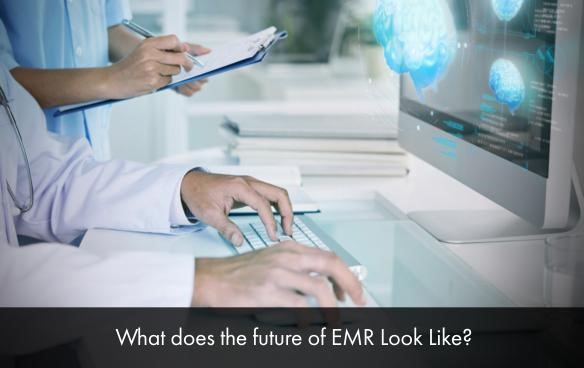Recently the world was impacted by an event that transformed everything. COVID has had permeating effects in almost all aspects of life, but none so more than the field in which it was unearthed: healthcare. The means through which we compensated have led to irreversible changes to EMR software around the world, forcing us to catalyse the development of devices that utilise more sophisticated technology. So, what does the future for EMR software actually look like?
Here are just a couple of the exciting ways in which EMR software is changing forever:
Developments in EHR Software
The Internet of Things
The Internet of Things (IoT’s) describes non-standard computing devices that can transmit and share data across the internet. As more people are afforded the opportunity to work from home, the demand for medically enabled IoT’s is expected to spike significantly. In fact, projections from 2020 show that this market is expected to jump from $50 billion (in 2020) to $135 billion in 2025. As of 2022, current trends support this projection.
Artificial Intelligence
Already, there are many practices in the USA that have begun to implement artificial intelligence to assist medical workers in performing life-saving tasks. This includes making important medical diagnoses and mapping health trends for specific patients. On top of this, companies are now researching ways to add voice recognition to their software. Lead physicians agree that AI systems must use naturally spoken language, by better mimicking human speech, as a means of having positive psychological effects on patients in otherwise daunting medical circumstances.
Integration
Another key feature of an EHR software is interoperability. Accessing previous patient records from other practices may seem like a standard feature across all electronic medical records (EMRs). However, this is a misnomer which results practitioners and patients taking more stress. This is compounded by patients seeing more than one physician. It also results in practitioners making queries for non-existent data, appending patient information, and leads to workarounds.
Due to a lack of demand and data sharing standards across the industry, it is difficult to find an EMR with this feature set, however the burnout it creates is very much felt across healthcare practices.
Fortunately, companies are listening to complaints and are now beginning to implement better integration features in new software or by updating old ones. Early data is promising, however patient awareness is also key. A study from 2019 showed that only 10% of patients accessed their own records; of them, 63% were encouraged to do so by their healthcare providers. As awareness spreads, these numbers will rise and reduce the workload on physicians.
Future Integrations with EMR Software
Among other things, technology has undeniably developed at an exponential rate in the past decade and this trend shows no signs of slowing down. Here are a few more features which could develop the future of EMR software:
- 5G and Big Data
- Wearable Devices
- Real-Time Data and Analytics
- Ease of Use
The future of EMR / EHR software is bright. Software developers are spearheading the implementation of new, better technology which will forever change the landscape of healthcare. More lives will be saved in some cases, and lives will be made easier in others. We will be covering the latest developments as they come, so stay tuned.







